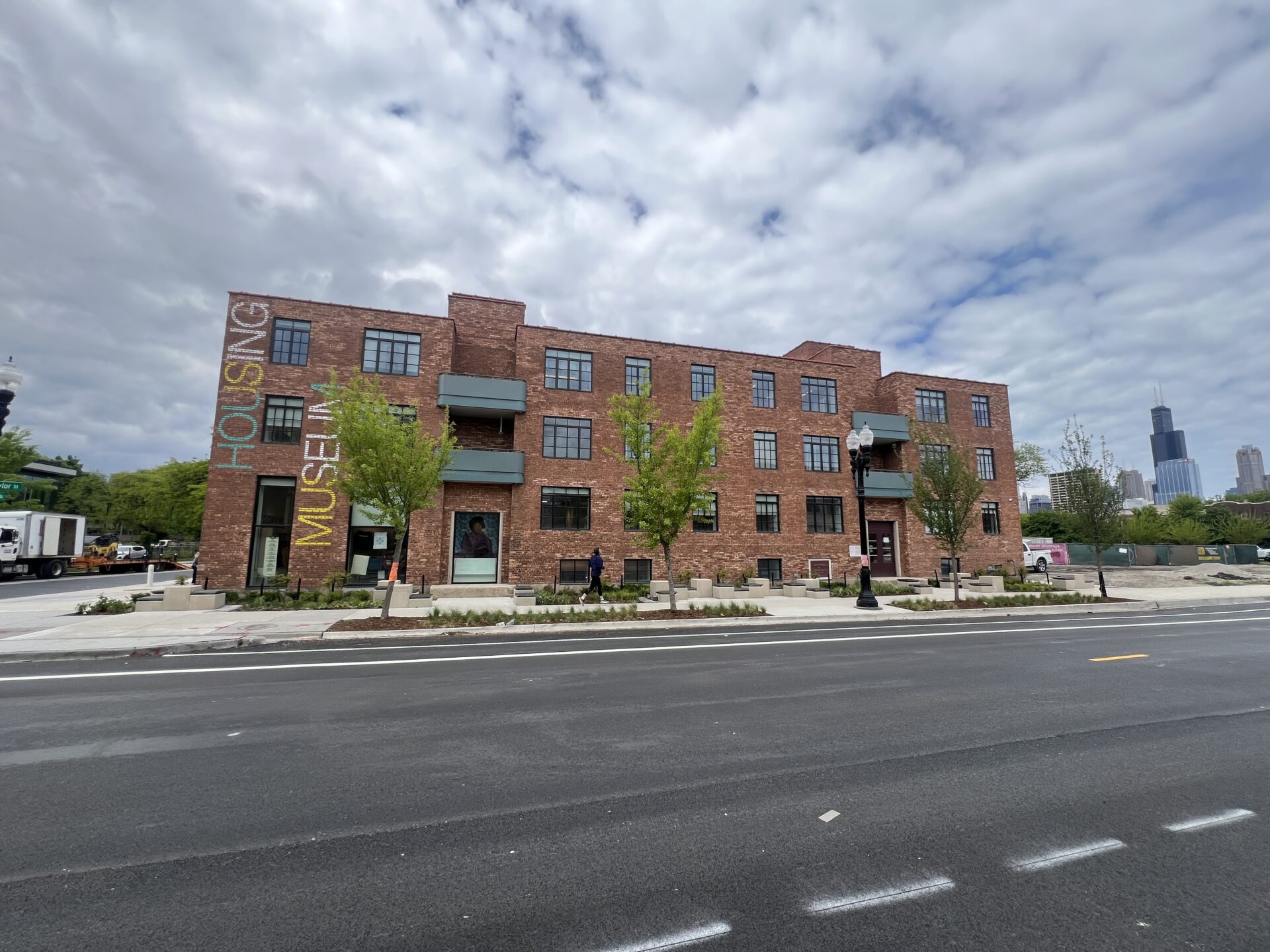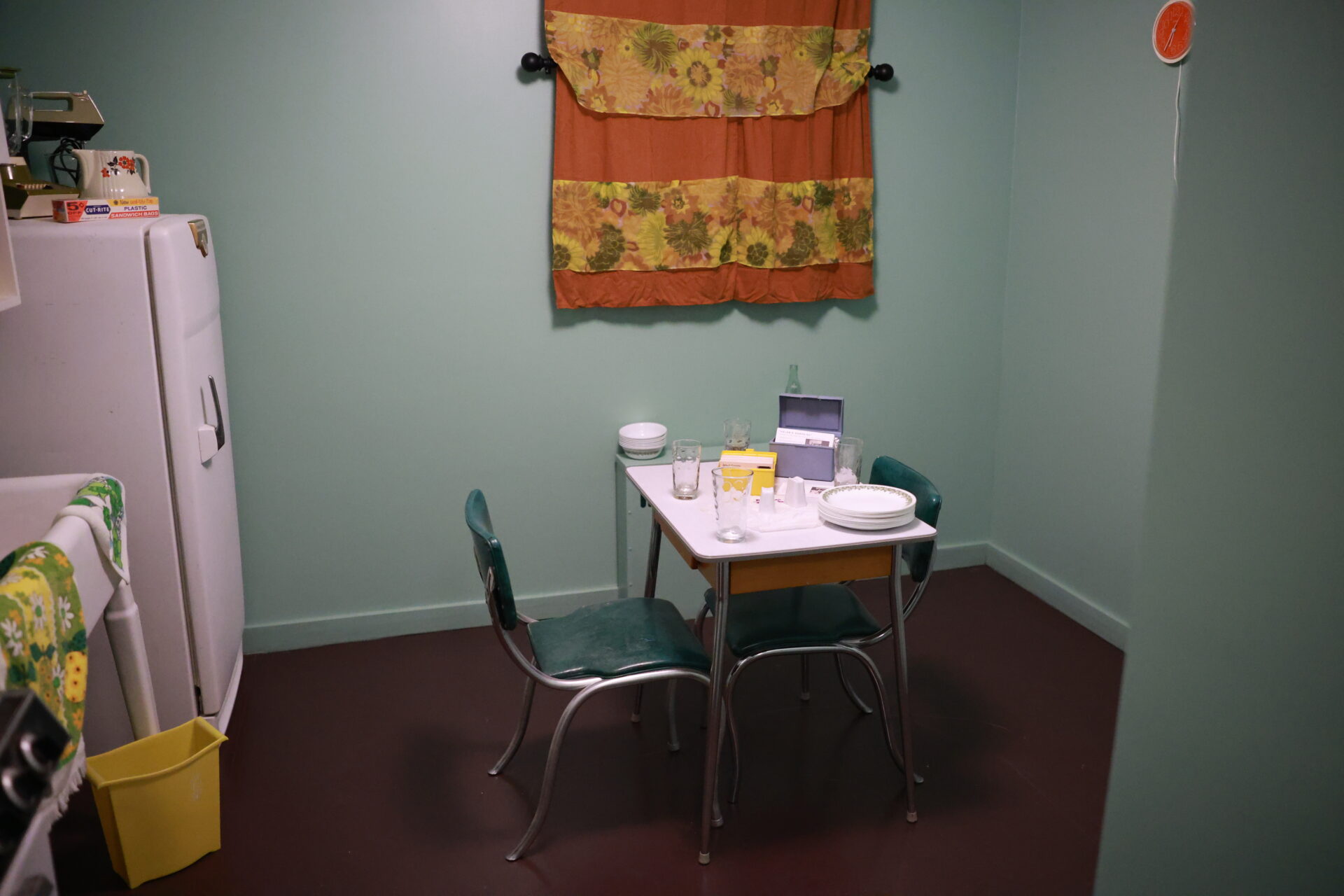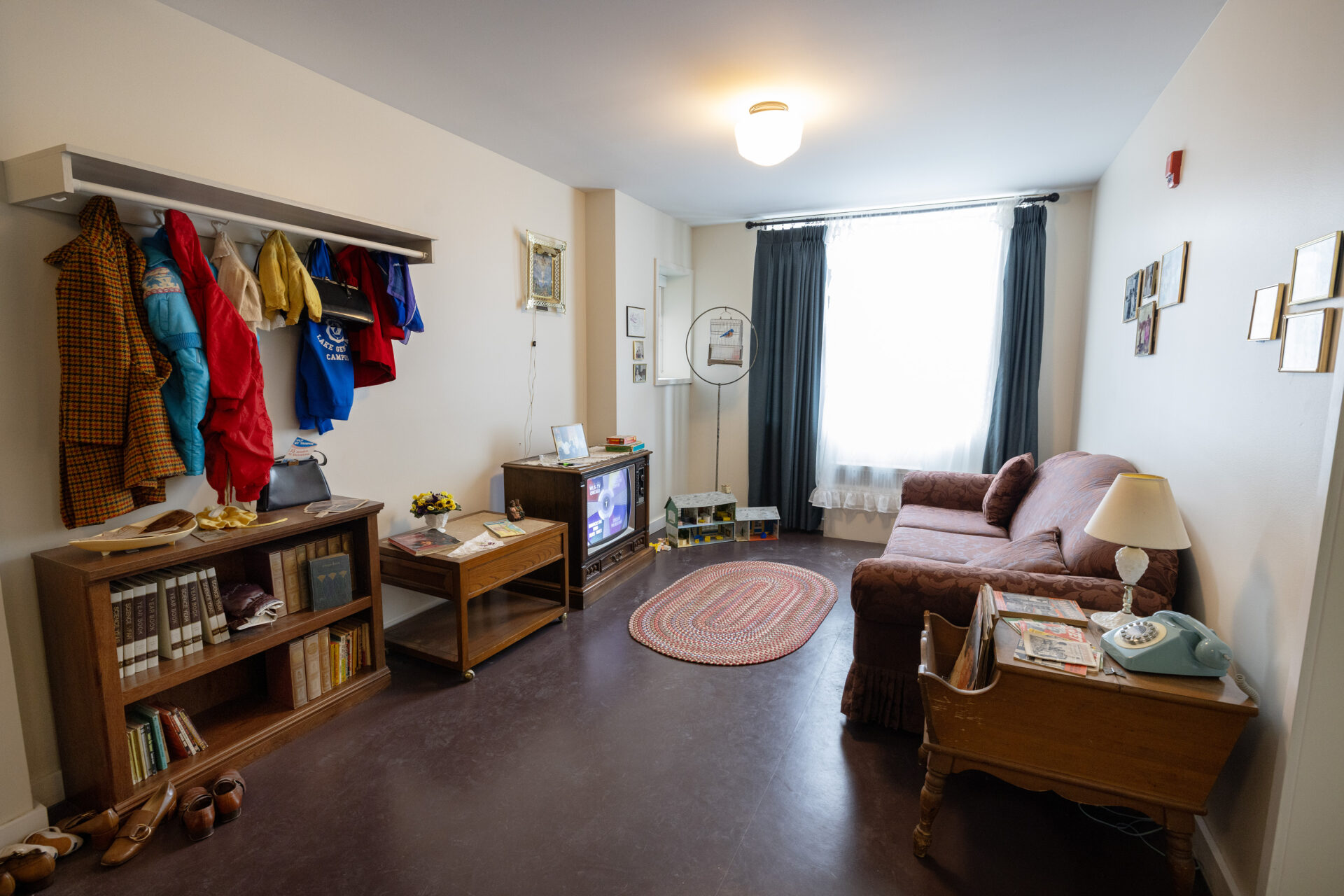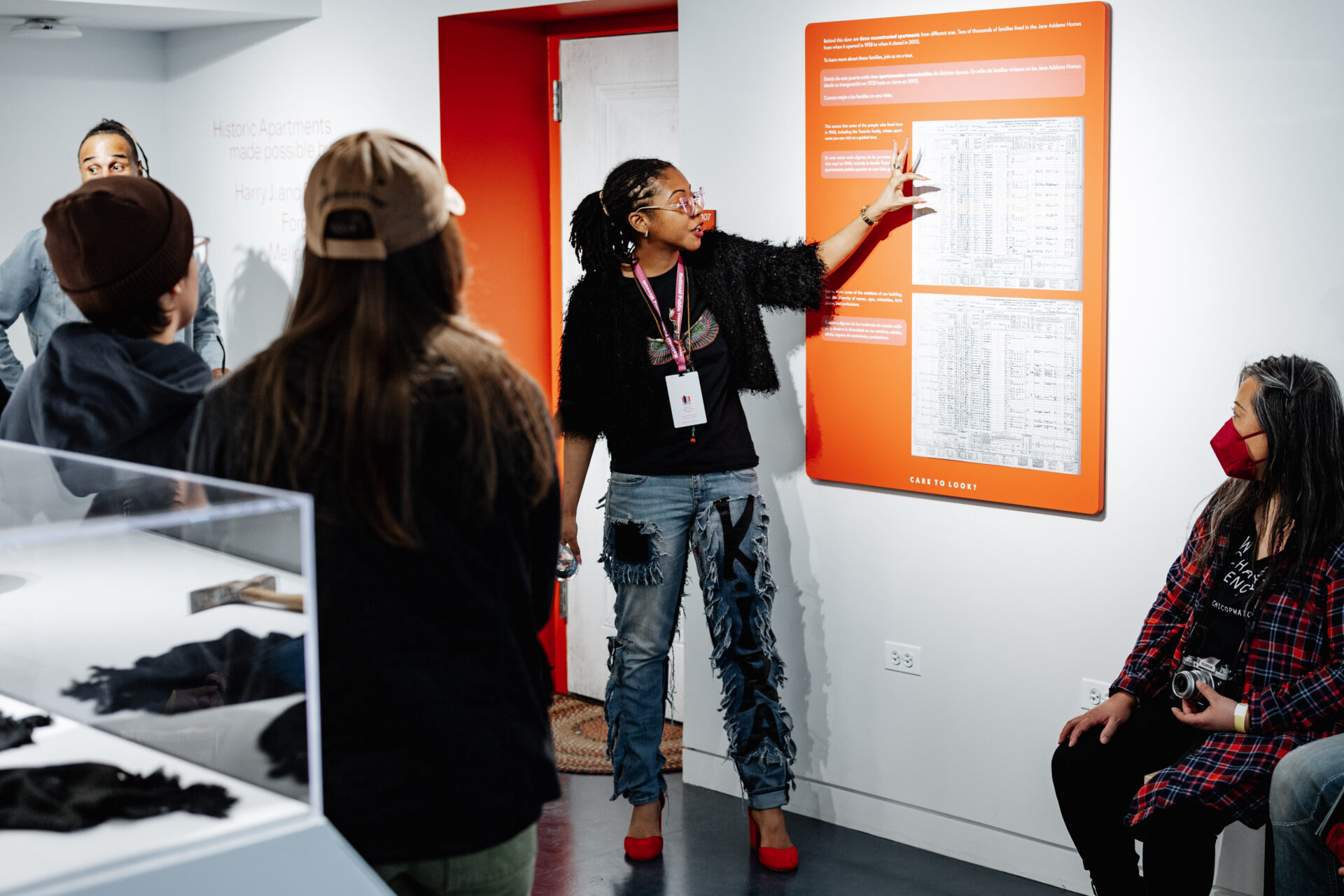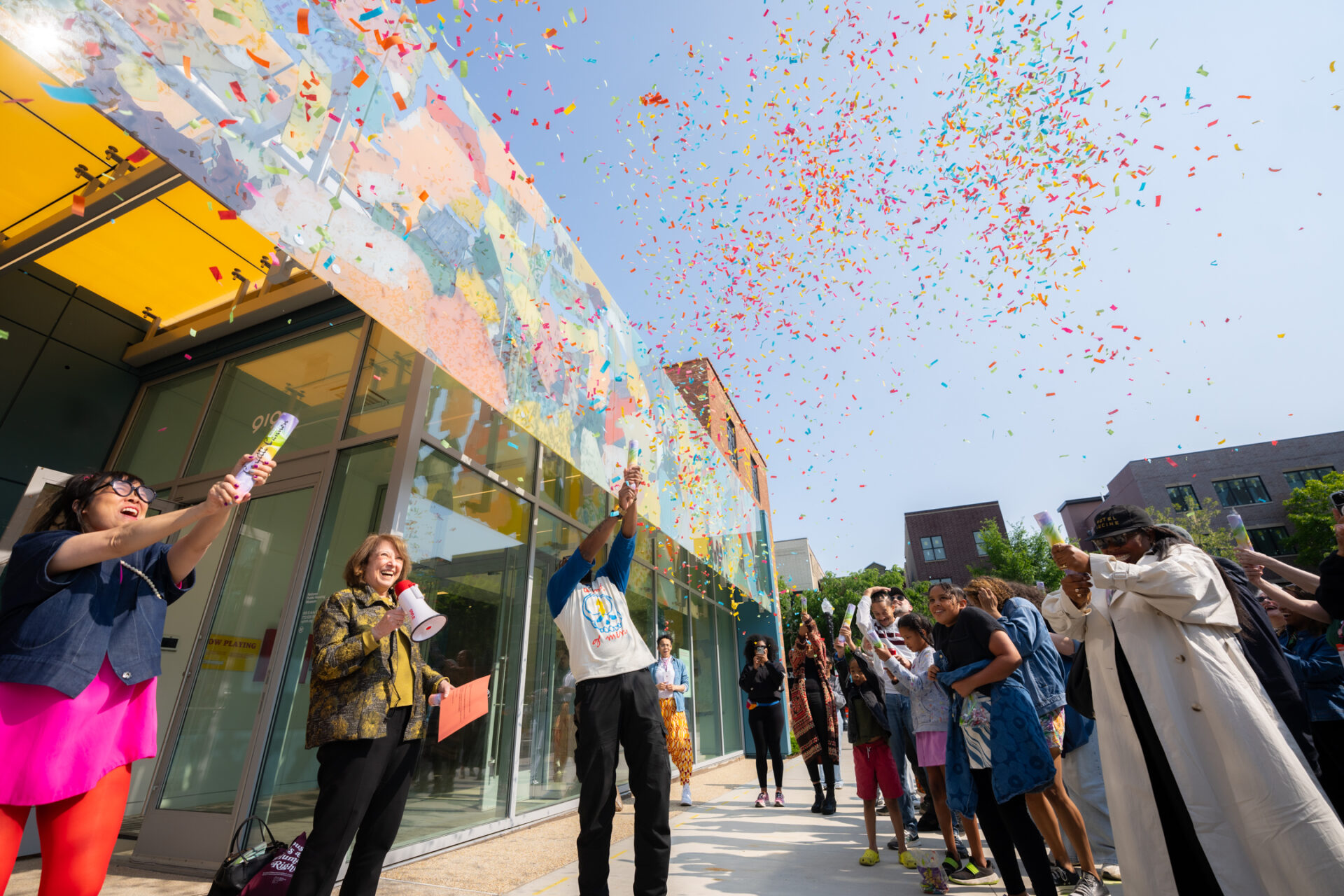How did saving this place impact people in your community?
Lisa Lee, Executive Director & Chief Curator, NPHM
All of the National Public Housing Museum exhibits and programs amplify the voices and experiences of public housing residents, recognizing diverse histories as valuable cultural assets. As a site of conscience, NPHM activates the power of place and memory to ask what we haven’t yet learned from history in order to solve urgent issues around housing insecurity. Our creative placemaking efforts include public art and history exhibits that empower residents as co-curators, storytellers and artists engaged in innovative public policy efforts. These diverse narratives ensure that never again will a single story about people in public housing be told as if it were the only one.
The museum project also led to the restoration of a set of enchanting animal sculptures by Edgar Miller (1899–1993) that once were the focal point of community life in the Jane Addams Homes. The restoration, by conservator Andrzej Dajnowski and artisans at Conservation of Artists and Objects Studio, captures the original spirit of the animals, which were originally commissioned by the Works Progress Administration (WPA) in 1936. These playful animal sculptures created a gathering place in the courtyard of the housing project from when the first residents arrived in 1938 until the National Public Housing Museum removed the sculptures in 2007. The Animal Court was an important social hub at the Jane Addams Homes, and its legacy continues today at the museum. In the Alphawood Foundation Sculpture Garden, guests are invited to listen to ABLA residents tell their poignant memories of the Animal Court throughout its history.
Finally, through a unique partnership with the Chicago Housing Authority and Related Midwest, several families now call the building home. Attached to the National Public Housing Museum are 15 units of public and affordable housing, built as part of the multi-building Roosevelt Square development as an innovative mixed-use model.
(Photo credit: Dirk Matthews)

